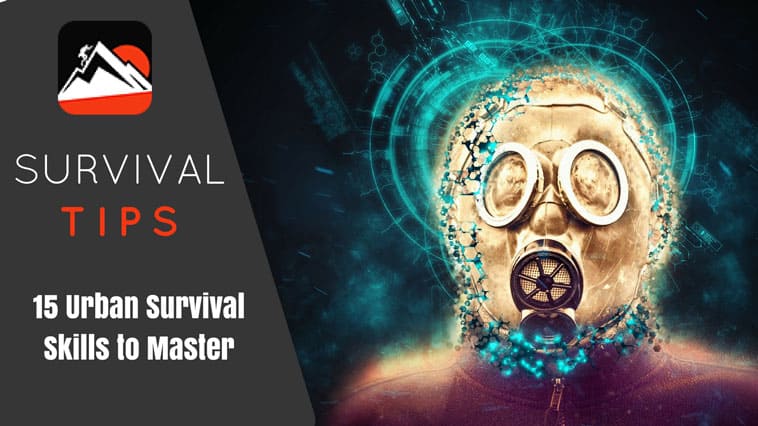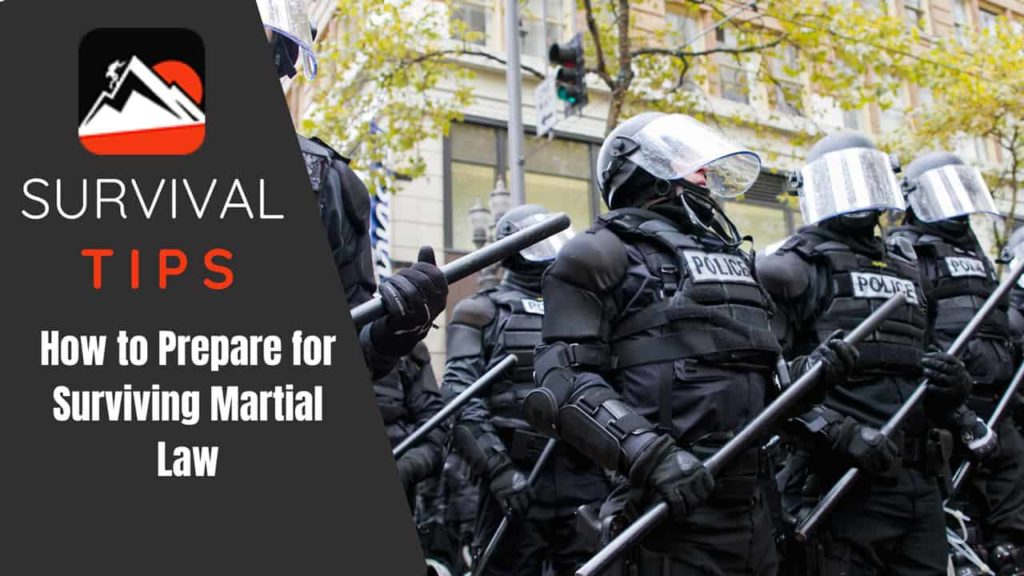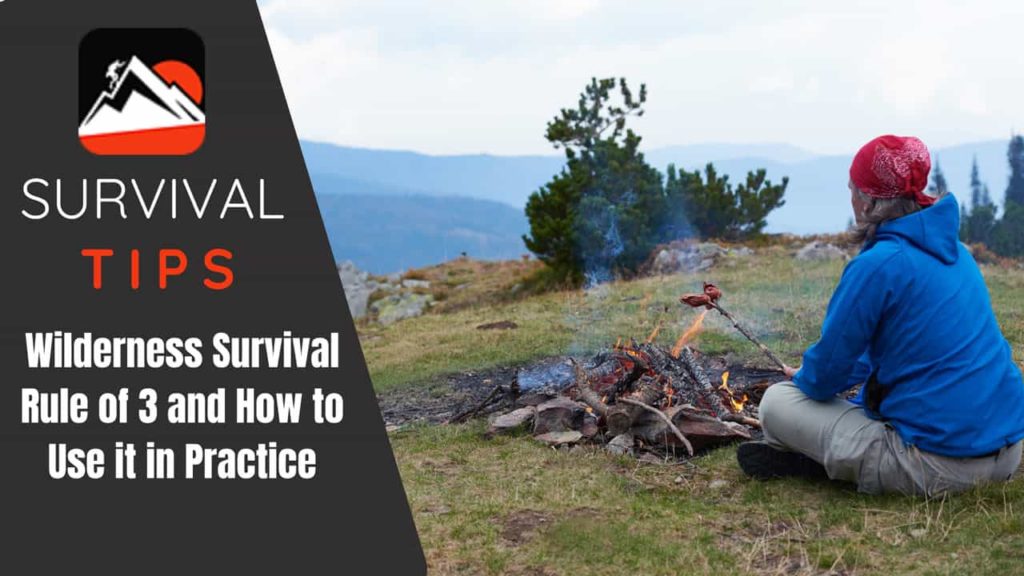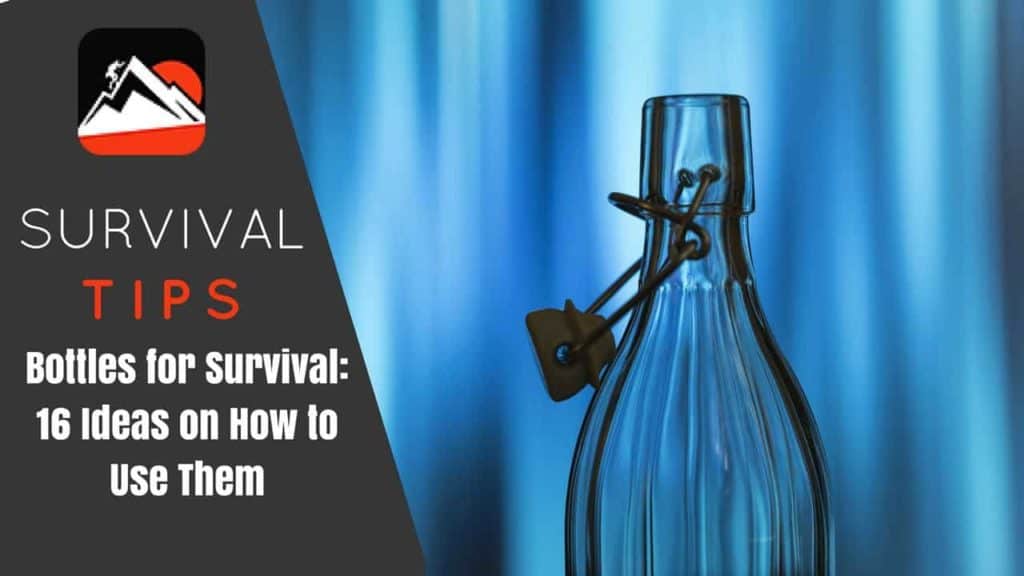Contents
Should a catastrophe occur, you should likely already have a thorough, well-developed plan designed to help get you out of the densely populated areas and into a region that is more sparse–ideally a designated bug out shelter at least a few miles from the nexus of people within your area. Of course, that is not always possible, no matter how well you plan. Sometimes, circumstances just work out in such a way that you are forced to scrap the lion’s share of the plan and just wing it where you are. While the inclusion of more people inherently makes urban survival a bit more a chaotic task, that does not mean you cannot be as properly prepared for it as wild survival. That is why we have put together a list of 15 Urban Survival Skills to Master, each of which will make you a little bit more self-sustaining should disaster strike and your bug out plan go kaput. As a bonus, many of these skills are applicable for wild survival too, so you very well may already have a leg up on the race.
[embedyt] https://www.youtube.com/watch?v=hr8PVidkyfM[/embedyt]
#1 Going Grey
It does not matter where you go or what you see, every recommendation in regards to bugging out will always have the strong suggestion of going grey. What this means is that you are actively taking as many steps as possible to camouflage and otherwise downplay your presence in the world so as to go unnoticed. That said, as much as we stress going grey when trying to survive in the wilds, it is equally as, if not more, important to put those same principles to work in an urban survival situation. And the larger the city you live in, the more important it is to master going grey before the preference simply becomes a needs.
In the wilds, your chances of coming upon another person are likely fairly slim–especially if you made it a point for your bug out plan to avoid routes and area where people are likely to be present. In an urban survival setting, that is likely to present far more of a challenging task than in the wilds, which means your inability to avoid other people will be exponentially more probable. By developing and using the grey man techniques in this setting, you can greatly reduce the incidence that you will be seen by other people–whether innocuous or malicious.
#2 Escaping
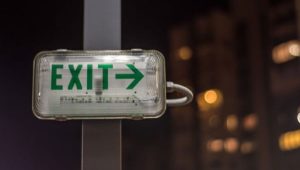
There will always come a time when exposed to a general populace long enough that you are discovered. In this situation, the best thing you can do is to avoid them at all costs as foes are liable to either try to steal your supplies or otherwise do harm to your person and belongings. Those individuals who do present a clear and present danger are still a liability in that they can try to glom on to you and your setup. In either circumstance, the individual presents a risk that should not simply be passively accepted. Of course, this is when you will need to make your escape.
Thankfully, it is actually significantly easier to hide in an urban survival setting than it is in the wilds. One thing to remember about escaping is that it depends less on the distance between you and your pursuer and more on whether or not your pursuer is aware of your perception. You have done a far better job escaping a pursuer who is unaware that you are hiding in the trash can right next to them than you have with a quarter mile of distance between you but having left an easily trackable trail. With the wilds, hiding places a few and farther between–as well as fairly obvious. As such, the numerous crooks and crannies in an urban setting offer far more places to hide than the errant contour, alcove, or fallen log.
#3 Self-Defense
Just as it is inevitable that you will eventually be seen by somebody given enough time, there will be only so many instances when escape is a viable option. As such, you should only expect so many successful escapes before one day, one time you are simply unable to elude your pursuer. When this time comes, your possible courses of action will be severely restricted, but by far one of the most necessary skill sets to learn–precisely for this situation–is how to defend yourself from a melee attack. Though you may never actually need to use this skill, it is one of those skills that is definitely better to have and not need than need and not have.
That said, there are a few reasons to develop self-defense skills other than to be able to defend yourself. The act of training in an appropriate martial art will inherently help you get in shape and stay physically fit in case your skills suddenly become necessary. One thing to keep in mind is that not all martial arts are designed to be used in the same contexts. Do a bit of research to figure out which of the urban, close-quarters combat arts you prefer otherwise you may study a form that is ill-equipped to handle the occasionally cramped spaces in which your skills may be put to the test.
#4 Physical Fitness

As alluded to prior, it cannot be overstated exactly how important being physically fit and in shape is to your odds of survival. Simply put, someone who is less trained may be able to survive in a collapsed urban setting longer due simply because of their ability to fully meet the physical challenges of survival head on for longer periods of time. This is not to suggest that physical fitness supersedes genuine survival skills, but the advantage that being in shape provides you is too great to ignore. As such, you need to ensure that you are capable of walking with a pack for miles–even in an urban setting.
This is because though urban survival may technically provide more available resources, but it also presents significantly more competition without as many truly self-sufficient means to supplement scavenging. Because of this, the longer you remain in an urban setting the more cumulatively important being in shape will become as you will be forced to rely on that fitness to deal with the growing conflict as resources dwindle. Similarly, being in good physical condition will make it easier to get to a remote bug out location once whatever prevented you from doing so subsides long enough to allow passage.
#5 Shooting
When worse comes to worst, there is no justifiable reason not to both be armed and trained in how to handle a firearm. There are certain circumstances for which the most appropriate response is an armed one, and generally finding yourself in those situations unarmed ends poorly, to say the least. That said, it is important to understand that not all firearms are ideal for this setting nor do they all have to be used for the same purpose. In this case, it would be important to understand what the different classes of firearm provide or restrict in an urban setting–especially considering the problems and goals out in the wild differ so significantly.
Still, some things do not terribly change all that much as it is advised that you ensure you are trained on a variety of firearms for different circumstances and to maintain adaptive flexibility. As such, while assault rifles might be the popular choice, we would recommend a handgun since this offers the smallest profile, can still field a decent size magazine, and they are by far the most common class of firearm sold in the US as well as having the largest stores of ammunition. Ultimately, this is a long-term outlook, and there is certainly nothing wrong with having a primary like a shotgun or even an assault rifle.
#6 Bartering
While it should be a top priority to ensure that you can confidently handle nearly any situation at every stage of escalation, more diplomatic methods of conflict resolution should not be overlooked in the process. This is especially true because the longer you stay in a collapsed urban environment, the fewer the remaining resources in the area, the more you are going to have to either figure out alternative ways of obtaining resources or engage with non-hostile survivors. While the former is arguably preferable, they are also often more dependent on your location and may take longer to truly develop.
As such, being able to barter with your fellow survivors can serve as an effective means of both obtaining resources and ensuring your security. For instance, while a group may try to steal your supplies in a general interaction, they may be willing to see the value of barter under the pretense that you would be able to get other things they might need in the future. On top of that, if you made sure to stock up on supplies that can be easily bartered, like alcohol or cigarettes, you can stand to gain value from the exchange as well. In this instance, you could very well develop one of the most important and elusive of urban survival resources: alliances.
#7 Finding Water

Just like in a wilderness survival situation, the first thing you should do once settled is finding water. In fact, even if you find yourself in more of a nomadic situation, being able to acquire water is arguably more important than shelter as you can always live “rough” for a little while until you either reach your shelter or find one. Finding water, on the other hand, can be just as difficult, if not more so, in an urban environment than in a wilderness environment. This is because should an urban center collapse, the mechanically driven water supply is likely to be one of the first utilities to go–shortly after electricity and heat.
As such, you will have to rely either on scavenging for bottled water and find other ways of collecting it. While scavenging may suffice in the beginning, those supplies will soon exhaust leaving you with the need to collect or store water long-term. One great source of water that is unlikely to be seized upon is a water tower attached to a building specifically to feed its lines for various functions. These are unlikely to run dry anytime soon, and if you can avoid being seen by other people, there is a good chance that most people will not think to consider the water stores held within.
#8 Finding Shelter
After finding water, your next goal should be able to find shelter–this is, of course, assuming either you are not near your home or that it was destroyed. In this situation, you may believe that you lucked out since virtually any and every building in a city is a potential shelter. While this is technically true, that does not mean that every building in a city is a potential safe shelter. Remember that any building you can get into to use for shelter is a building that other people can get into as well. As such, finding shelter in an urban environment involves figuring out which spaces provide shelter but are unlikely to attract other people–which includes the city’s indigent population which means many of the best options are out.
In this instance, a building with multiple levels would be far better than one with a single story. This is because a building with a large number of rooms is unlikely to be approached at night with the intention of a thorough search. That said, any building with multiple is definitely a target to be scavenged during the day, so do not set up a permanent camp in this kind of shelter. If you need long-term shelter in an urban setting, places with large machinery are unlikely to be occupied due to their lack of consumable resources as well as their general isolation from locations with those consumable resources.
#9 Finding Food
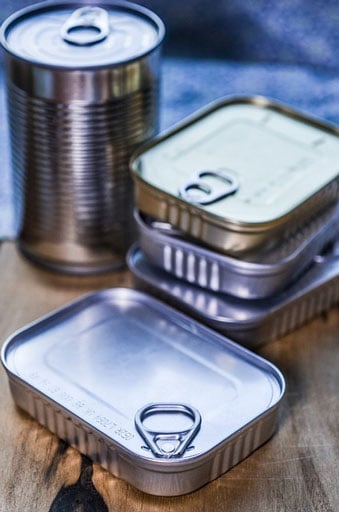
Because you can technically survive without food for long periods of time compared to water and shelter, finding food is not as dire a need–not to mention the fact that food will be far more plentiful for far longer than will water supplies. However, all good things will eventually come to an end, and before too long, those stores of food will be exhausted by a panicked and unprepared public. Hopefully, you have a safeguarded stock of food stores enough to last you for months if not years. That said, there is no time like the present to ensure that you can still supplement your food stores in ways that do not put you at risk of being discovered–like scavenging.
One way of doing this is figuring out what in your urban area grows that is still edible. You would be surprised how many herbs and roots may grow in your area that are not only edible but can provide the vitamins you need that would otherwise be difficult to get. In this case, you would not only need to consider which edible and nutritious plants are indigenous to your area, you would also need to consider where in the urban environment these plants are liable to grow. A small park can be a great place to find a healthy supplement to your diet.
#10 First Aid
This is another skill set which you should develop for all prepping scenarios, though in an urban setting you are actually at something of an advantage. Aside from the fact that you should be able to find first aid resources for at least as long as you can find food and water, urban settings are far more liable to have advanced medicines or tools that make performing even advanced forms of first aid significantly easier, more likely to be successful, and far less likely to spread infection. That said, there are also plenty of first aid considerations that are particular to an urban setting which differs from your wilderness first aid training.
For instance, you are far less liable to run into a poisonous spider or snake unless you are explicitly looking in dark, damp areas. On the other hand, you are far more likely to come into contact with something rusty that cuts you–in which case you would need to be treated for tetanus. It is also important to note that once medical supplies do eventually become scarce, they will become some of the most valuable and sought-after items–especially pain relievers and other common over the counter medications.
#11 Repair
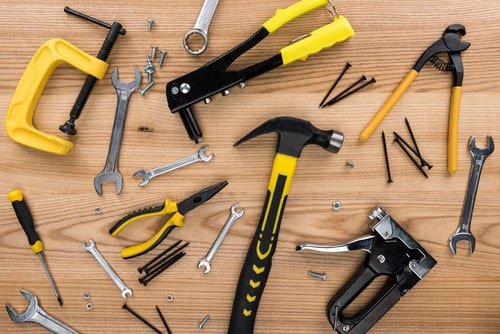
This skill has applications for all survival situations, but in an urban setting, this skill can truly shine and offers significant benefits for both short-term and long-term scenarios. In the short-term, various types of repairing and handyman skills can help keep equipment and vehicles functioning at those crucial first hours. Whether this applies to you and your party trying to get out or you just hunkering down to ride the disaster out, being able to keep your gear functioning after lost can be the difference between life and death. On a less somber note, these skills can often make seemingly simple tasks easier as well–especially if you have any skill with small electronics and mechanics.
For the long-term projection, repair skill become arguably some of the most valuable to have right outside of medical skills. This is because you can use repair skills to keep certain luxuries functioning longer than others–which could save a life. For instance, if you or a member of your party is diabetic, you will need to consider how to keep the insulin refrigerated without a central power supply. Of course, being the person that can keep increasingly rare conveniences functioning can also be a great benefit to any other survivors–both friendly and hostile.
#12 Navigation
This is a skill that will either become the most immediate concern for your survival or it will be relegated to an afterthought. The deciding factor as to whether or not you need to worry about navigation is how familiar you are with the urban landscape. If you live or spend significant amounts of time in this urban setting and can get around primarily by memory, then there are likely bigger concerns you should address. Keep in mind, if you live in a metropolitan city, you do not necessarily need to know every single street and alley–though it would definitely provide you an advantage in staying grey.
That said, if you are not all that familiar with the urban setting you find yourself in, figuring out where you are and where you are going should become priority number one. One of the best ways to ensure this is to keep a physical map of your region wherever you go keeping in mind that you are unlikely to have access to a digital map unless you have one save on your smart device–for however long its battery lasts. It is also worth noting that passing familiarity is not sufficient to be considered acceptable for survival navigation standards.
#13 Home Security

Once you have secured a shelter and developed it into a sustainable site, your next step should be to ensure that it is secure from outside encroachment. This can be accomplished through passive or direct means, but they are a vital tool in the fight for urban survival. The first set of considerations regarding home security involves alert systems which can range from powered, like an actual electronic security system, to more makeshift in nature like a trip wire. Regardless the approach, the point is to ensure you see intruders before they see you.
The second degree of home security can be seen as the deterrent phase in which you or something else acts as a deterrent, potentially threatening bodily harm to the intruder. This is a situation where if you have made preparations for employing a survival dog, you should definitely allow its guarding instincts to provide both an alert system as well as a deterrent. Alternatively, you can set up a number of traps, though this can be counterproductive if you are surviving with a larger party or known allies considering few are likely to maintain that degree of vigilance. Though its results are dubious at best, you can also always rely on a loud and bright alarm system to temporarily disorient any intruders, giving you the opportunity to make the first move.
#14 Riots
Though the threat of rioting may be a bit predictable, and thus easier to prepare for, it is very likely that you or your party could either be the target or swept up in a mob following a disaster. These moments are generally immediately preceding the disaster–perhaps by hours if in a densely populated enough region and given an advance warning–and immediately following the disaster–especially if the disaster itself caused significant structural and secondary damage beyond the initial wave. Finally, riots can break out at any time once a disaster site has become normalized, and this is especially likely once the available resources surpass the number of people affected.
If you find yourself swept up in a spontaneous riot, it is important to consider how best to move in large, herd-like groups. The first thing to remember is to never go against the direction of the crowd as you will simply be knocked back and potentially trampled to death. Depending on the aggressiveness or desperation of the crowd, the mob very well could turn inwardly destructive. In this situation, your best option is to move diagonally to the edge of the crowd and not respond to anything said to you–no matter the tone.
#15 Homesteading
While it is exceedingly unlikely that you find yourself in a situation where you would stay in an urban survival setting, preppers do not limit their scope nor their scale merely to the likely. In this case, it is always a good idea to be looking as far in the future as can be reasonably conceived for which years definitely should not be out of the question. That said, trying to plan a measure of homesteading in an urban environment can be challenging and will likely result in less return of time and energy than the same tasks taken on a remote bug out location.
Still, there are plenty of ways that you can help future-proof your home in an urban setting against the potential collapse of civilized routines. For instance, there are a fair number of herbs and flowers you can grow on a balcony–and that is assuming that you have neither the space nor the municipal ordinances allowing you to grow a full garden in either your front or backyard. While it is less likely to be acceptable or feasible in a densely populated urban setting, keeping a small number of chickens or rabbits can be an effective means of providing fresh protein and they are relatively easy to keep too.
Conclusion
As we can see, the skills that you need to survive in an urban setting are not too terribly different than most of the skills necessary for wilderness survival–though their expression and solution may present differently. Even many skills which are used differently, the core principles remain. That said, there are plenty of situations for which an urban setting presents unique or unexpected challenges for which you should be prepared. Of course, by referring to this list and applying the suggestions–many of which will on their own require a serious investment of time and effort, your survival knowledge should be both broad and deep, providing solutions for virtually any situation.

